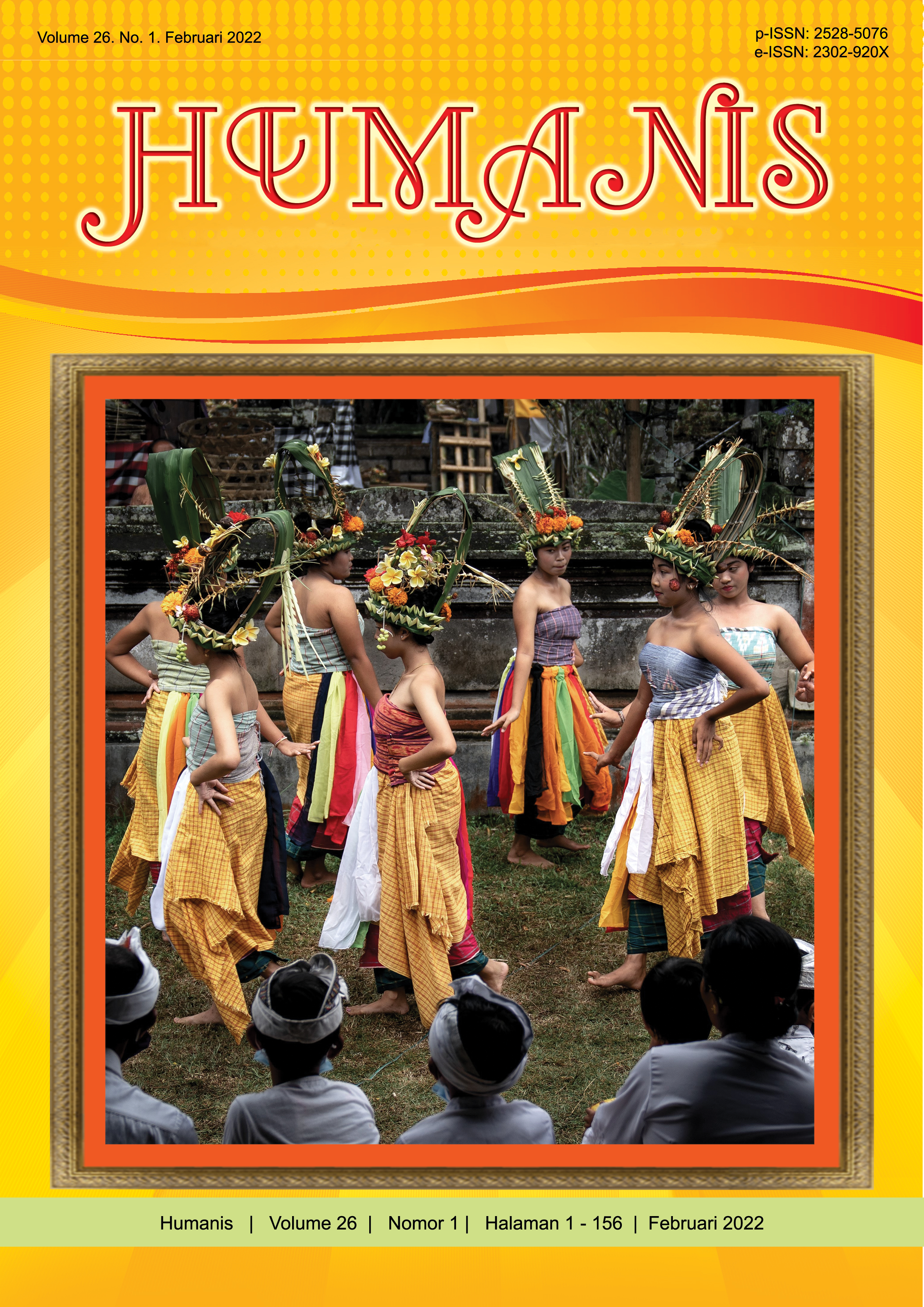Pemulihan Trauma Pasca Bencana pada Tokoh Anak dalam Buku Cerita Bergambar (E Hon)
Abstract
This study aimed to know the form of trauma recovery for child survivors after the 2011 T?hoku Tsunami, in the picture book (e hon) entitled Minna de Utau be! by Mari Mitsuoka. The method used in this research is descriptive analysis. Theories used in this research are Sigmund Freud's theory of Literature Psychology and Resilience theory by Masten (2014). The analysis results showed that child characters in e hon are described as having characteristics of mild trauma that can recover quickly through appropriate trauma recovery support. Those types of recovery support were affected by protective factors that interconnect and complement each other, such as the characteristics of child survivors, family support, and psychological support activities in the school and community environment. The effectiveness of appropriate recovery aid enhances children's resilience in the trauma recovery process, so they can recover and thrive after experiencing a natural disaster.
Downloads
References
Asogawa, A. (2011). Higashi Nihon Daishinsai ni okeru Togura Shōgakkō no Hinan ni tsuite - Jidō no Hikiwatashi ga Shūryōsuru made no Hinan ni tsuite. Miyagi Prefectural Government. https://www.pref.miyagi.jp/uploaded/attachment/12404.pdf.
Baytiyeh, H. (2019). Why School Resilience Should Be Critical for the Post-Earthquake Recovery of Communities in Divided Societies. Education and Urban Society, 51(5), 693–711. https://doi.org/10.1177/0013124517747035.
Boyden, J. & Mann, M. (2005). Children's Risk, Resilience, and Coping in Extreme Situations. In Michael Ungar (Eds.), Handbook for Working with Children and Youth: Pathways to Resilience across Cultures and Contexts (pp. 3-26). SAGE Publications. http://dx.doi.org/10.4135/9781412976312.n1.
Brocque, R., Young, A., Montague, G., Pocock, S., March, S., Triggell, N., Rabaa, C., & Kenardy, J. (2017). Schools and Natural Disaster Recovery: The Unique and Vital Role That Teachers and Education Professionals Play in Ensuring the Mental Health of Students Following Natural Disasters. Journal of Psychologists and Counsellors in Schools, 27(1), 1-23. doi:10.1017/jgc.2016.17.
Damayanti, S., Suarka, I.N, & Ari Sulatri, N.L. (Eds.). (2020). Disaster Discourse in Children’s Story Books. Proceedings of the 1st International Conference on Folklore, Language, Education and Exhibition (ICOFLEX 2019). Atlantis Press. https://doi.org/10.2991/assehr.k.201230.038.
Damayanti, S. (2021). Penerapan Analisis AWK van Djik: Pendidikan Kebencanaan dalam Wacana Naratif Daijiishin Kara no Onegai Karya Keiko Ohashi. In I. N. Suparwa & S. Damayanti (Eds.), Tiga Paradigma Analisis Wacana Kritis dan Penerapannya (pp. 93-117). Swasta Nulus.
Hafstad, G. S., Haavind, H., & Jensen, T. K. (2012). Parenting After a Natural Disaster: A Qualitative Study of Norwegian Families Surviving the 2004 Tsunami in Southeast Asia. Journal of child and family studies, 21(2), 293-302. https://doi.org/10.1007/s10826-011-9474-z.
Kenichiro, K. (2012). Ehon to Kodomo no Ningen Keiseiron: Tasha to no Kaigō no Fukanōsei to Kanōsei. Annals of Educational Studies, 17, 89-100. doi/10.18910/8626.
Kukihara, H., Yamawaki, N., Uchiyama, K., Arai, S., & Horikawa, E. (2014). Trauma, Depression, and Resilience of Earthquake/Tsunami/Nuclear Disaster Survivors of Hirono, Fukushima, Japan. Psychiatry and Clinical Neurosciences, 68 (7), 524-533. doi: 10.1111/pcn.12159.
Levine, P. dan Kline, M. (2010). Trauma Through a Child's Eyes: Awakening the Ordinary Miracle of Healing - Infancy Through Adolescence. North Atlantic Books.
Masten, A. S. (2014). Ordinary Magic: Resilience in Development. Guilford Press.
Minderop, A. (2018). Psikologi Sastra: Karya Sastra, Metode, Teori, dan Contoh Kasus. Yayasan Pustaka Obor Indonesia.
Mitsuoka, M. (2013). Minna de Utau be! (O.Yoshiko, Illus.). Gakken Education.
Miyagiken Kodomo Sōgō Sentā. (2016). Higashinihon Daishinsai ni okeru Kodomo no Kokoro no Kea ni kansuru Hōkoku. Miyagi Prefectural Government. https://www.pref.miyagi.jp/documents/15133/356072_1.pdf.
Mohammadinia, L., Ardalan, A., Khorasani-Zavareh, D., Ebadi, A., Malekafzali, H., & Fazel, M. (2018). Domains and Indicators of Resilient Children in Natural Disasters: A Systematic Literature Review. International journal of preventive medicine, 9, 54. https://doi.org/10.4103/ijpvm.IJPVM_1_18.
Nakamura, M. (2017). Higashinihon Daishinsai Ato no Tsuitō ya Fukkō to Ongaku no Kakawari ni Kansuru Gakusaiteki Kenkyū. KAKEN Project. https://kaken.nii.ac.jp/ja/grant/KAKENHI-PROJECT-25580023/.
Reivich, K. & Shatte, A. (2003). The Resilience Factor: 7 Keys to Finding Your Inner Strength and Overcome Life's Hurdles. Broadway Books.
Sinarsih, A., Handani, Y., & Tjong, C. (2015). Dampak Psikologis Tokoh Pria dan Wanita dalam Film Tangshan Da Dizhen. Jurnal Lingua Cultura, 9(2), 120 - 126. https://doi.org/10.21512/lc.v9i2.830.
Suparmi & Sumijati, S. (2021). Pelatihan Empati dan Perilaku Prososial pada Anak Usia Sekolah Dasar. PSIKODIMENSIA Kajian Ilmiah Psikologi, 20(1), 46-58. 10.24167/psidim.v20i1.2879.


















